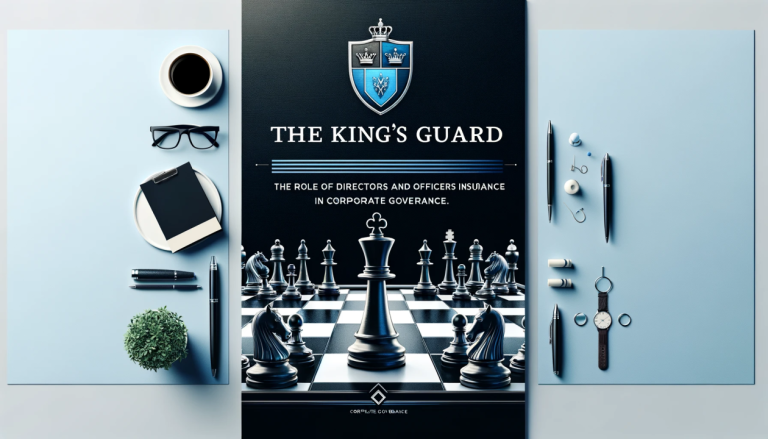If your company is going public or you’re reviewing your public company’s D&O program, it’s important to know what drives the cost and how to manage it. This article delves into the factors that influence D&O insurance pricing for public companies, current cost trends, and tips for budgeting and optimizing your coverage.
What Drives the Cost of D&O Insurance for Public Companies?
Several key factors influence how much a public company will pay for D&O liability coverage:
- Company size & financials: A company’s market capitalization or asset size is a major factor. Generally, the larger the company (in value or revenue), the higher the premium, because more money at stake often means bigger lawsuits if things go wrong. Insurers will also look at financial stability – companies in distress may pay more since they’re at heightened risk of investor suits (e.g. if stock prices swing or bankruptcy looms).
- Industry sector: Some industries carry higher D&O risk. For example, biotech and life sciences firms have historically high D&O rates due to frequent stock volatility and lawsuits (failed drug trials leading to shareholder claims, etc.). Tech companies can also be high-risk, especially if valuations are volatile. On the other hand, a stable utility company might see relatively lower premiums (all else equal) because their risk profile is more predictable.
- Claims history: If your company (or its directors) has a history of past D&O claims or litigation, underwriters take note. A company emerging from prior shareholder lawsuits will be rated up (cost more) compared to a similar company with a clean record. Likewise, if the industry as a whole is experiencing a wave of claims, that can drive everyone’s prices up.
- Coverage limits and structure: The more insurance you buy, the more you’ll pay. Public companies often purchase large D&O towers (e.g., $20 million, $50 million or more in layers of coverage). Premiums are often quoted per $1 million of coverage; buying higher limits yields higher total premiums (though sometimes at a slightly discounted rate per million for higher layers). Whether you include extras – like dedicated Side A excess coverage for individual directors – can also add to cost.
- Corporate governance and risk profile: Underwriters may consider qualitative factors, like the company’s governance practices, internal controls, and risk management. A company with a strong governance reputation, transparent financial reporting, and experienced management might get somewhat favorable rates, whereas a company perceived to have aggressive accounting or frequent regulatory run-ins could pay more. Geographic exposure matters too – if you’re listed on U.S. exchanges or have a large U.S. shareholder base, your D&O cost will be higher than a similar company with only domestic (non-U.S.) exposure, due to the U.S.’s more lawsuit-friendly environment.
- Market conditions for insurance: The D&O insurance marketplace itself cycles between “hard” and “soft” phases. In a hard market (when insurers have faced heavy losses or uncertainty), premiums go up for everyone, even companies with spotless records. Conversely, when insurers are competing for business (a softer market), prices ease. We’ll discuss recent trends in the next section, but it’s important to know that not everything affecting your premium is under your control – broader market dynamics play a big role.
Recent Trends in Public Company D&O Premiums
The last several years have been a rollercoaster for D&O insurance rates, especially in the U.S. market. Understanding these trends can help you anticipate budget changes:
- 2018–2020: Hard market and surging premiums. After a period of many shareholder lawsuits and big payouts (including event-driven litigation and a spike in federal securities class actions), insurers dramatically raised D&O rates. During 2020, it wasn’t uncommon to see double-digit percentage hikes on renewal. In fact, D&O renewal premiums were averaging ~14% increases through 2020–2021. Some companies in hot sectors or IPOs saw even more extreme jumps, as illustrated by the biotech IPO example above. New public companies in 2019 were seeing rates of $150k or more per $1 million of coverage (versus maybe $50–60k per million a couple years prior). Many insurers also increased deductibles and cut capacity, making it hard for buyers to get the limits they wanted at a reasonable price.
- 2021–2023: Stabilization and easing. As those high premiums attracted new insurers into the D&O market and claims frequency started to level off, competition increased. By 2022 and into 2023, the trend shifted – many public companies started seeing flat or even reduced D&O premiums at renewal. According to market data, by 2023 the average D&O rate change was nearly flat (around 0%) compared to the steep hikes of 2020. Some segments like IPOs and SPACs, which had been extremely pricey, saw relief as the frenzy of SPAC filings subsided and more insurers were willing to write those risks. Essentially, the D&O marketplace moved into a softer phase, though certain sectors with ongoing high claims (like those facing a lot of litigation) remained costly.
- 2024 and beyond: A cautious outlook. By late 2024 and heading into 2025, D&O insurance rates for many public companies have moderated significantly from the peaks of a few years prior. However, new risk factors (like the potential for lawsuits around ESG disclosures or cyber incidents impacting stock prices) keep insurers watchful. If your company operates in an emerging area with untested legal exposures – say, AI technology – you might still face steeper rates. Overall, though, buyers have more leverage now than they did during the hard market. It’s a good time to market your D&O program to multiple insurers to ensure you’re getting a competitive price.
Managing and Budgeting for D&O Insurance Costs
Facing a steep D&O premium bill can be daunting, but there are ways to manage the expense:
- Plan and shop around: Don’t wait until the last minute at renewal. Start the D&O renewal process early and engage multiple insurance markets (through your broker). In a softening market, underwriters are more willing to compete for your business – you might get better terms or premiums by soliciting quotes from several insurers rather than just renewing with the incumbent without question.
- Adjust retentions and limits: One way to control cost is by increasing your deductible/retention. Higher retentions mean you shoulder more of the initial loss, but it can significantly cut the premium. Similarly, carefully evaluate how much limit you truly need – public companies often buy as much as they reasonably can, but if premiums are prohibitive, you might opt for a slightly lower limit or a structured program (e.g., a combination of primary and excess layers) to optimize pricing. Work with experts to benchmark against peers – you want enough coverage to be safe, but not overspending on excess limits you might not use.
- Demonstrate good risk profile: Underwriters can offer better pricing if they perceive your company as well-managed. Prepare a narrative about improvements you’ve made – say, new compliance programs, adding independent directors, strong financial results – anything that might quell concerns. While you can’t change your industry or market cap, you can show that you take governance seriously. Some insurers might give credits (discounts) for things like having no past claims, or for carrying certain other policies (like robust EPLI or cyber coverage) that indicate a proactive stance on risk.
- Consider program structure tweaks: In some cases, buying a standalone Side A DIC policy (which only covers individual directors and officers on a broader basis) on top of a traditional D&O program can actually add protection without a huge cost increase, because Side A DIC tends to be cheaper (it’s only tapped in worst-case scenarios). This doesn’t exactly reduce your main D&O premium, but it can improve the overall value of your spend by giving extra personal asset protection to directors for a modest incremental cost.
- Budget for the long term: D&O insurance is not a one-time cost – it’s annual. When planning an IPO or major expansion, budget conservatively for D&O. For instance, if companies of your size/sector typically pay $X per million, use the higher end of market benchmarks for your estimates, especially if the market is hardening. And remember premiums can swing: build some cushion in your budgets for potential increases. Conversely, if rates drop, that’s a bonus.
Ultimately, public company D&O insurance is a necessary investment in protecting the enterprise and its leadership. By staying informed on market trends and working closely with a savvy broker, you can secure the coverage you need at the best available price. It’s wise to treat D&O insurance cost management as an ongoing exercise – part of your overall corporate risk management strategy.
Conclusion
D&O insurance for public companies doesn’t come cheap – but considering the stakes, it’s money well spent. Understanding the factors that influence your premium can help demystify those sometimes eye-popping quotes. Size, sector, and market conditions all play a role, and while you can’t control everything, you’re not powerless either. By proactively managing your D&O program, exploring options, and maintaining strong governance, you can put your company in the best light and push for the most favorable rates.
Public company executives have enough to worry about in steering the business; D&O coverage lets them do so knowing that if a lawsuit lands on their doorstep, it won’t sink the ship. The cost is part of the price of access to capital markets – and like any cost, it can be planned for and optimized. Stay informed, be strategic, and you can keep this critical protection affordable and effective.
Key Take-aways
- Premiums reflect risk: D&O insurance costs for public firms are high because the exposure (shareholder lawsuits, etc.) is high. Factors like company size, industry, and claims history heavily influence the price.
- Recent volatility: The past decade saw D&O premiums surge and then ease off. Hard markets drove prices up dramatically around 2019–2020, while increased competition has brought some relief more recently. Always be prepared for shifts – what you pay now could change in a year or two as the market evolves.
- Geography matters: U.S.-listed companies generally face the steepest D&O costs due to litigation risk. European or other markets may see relatively lower premiums, but any company with international exposure should expect insurers to price in that global risk.
- Mitigation strategies: You can manage D&O costs by adjusting your coverage structure (limits and retentions), actively shopping the policy, and demonstrating strong corporate governance to underwriters. Over time, a good track record with fewer claims can help moderate your premiums.
What to do next
- Benchmark and budget: Research what similar companies are paying. Your broker can provide benchmarking data. Use that to set realistic budgets for D&O insurance in your financial plans, especially if you’re approaching an IPO or significant growth event.
- Engage an expert broker: Public company D&O is a specialized market. Work with a broker who has experience in this area – they will know which insurers are hungry for certain sectors, how to present your company’s risk in the best way, and how to negotiate terms like multi-year deals or broad coverage enhancements.
- Review coverage annually: Don’t just renew and forget. Each year, examine if your limits are still appropriate (maybe you raised more capital and need a higher limit?). Check if you can increase your retention to save premium. See if any new insurers have entered the market who might offer a better deal. Treat it as a yearly financial decision, not just an insurance chore.
- Invest in risk management: Finally, remember that reducing your risk of lawsuits can eventually reduce your insurance costs. Ensuring robust disclosure controls, complying with regulations, and avoiding unnecessary controversies will not only please your investors but also make you a better risk in the eyes of insurers. While you can’t avoid all lawsuits, a culture of good governance can pay off in many ways, including potentially friendlier insurance renewals.
For a deeper understanding of D&O insurance itself (beyond just the cost), read our comprehensive D&O Insurance Explained guide. And if your company is still private or just scaling up, see our What is D&O and E&O Insurance overview to ensure you have the right protections in place before taking the leap into public markets.


















































































































